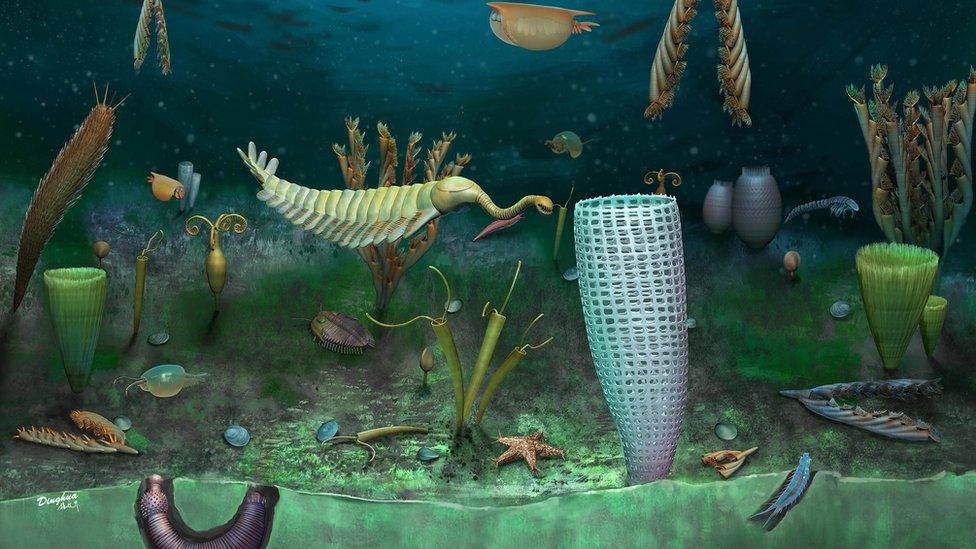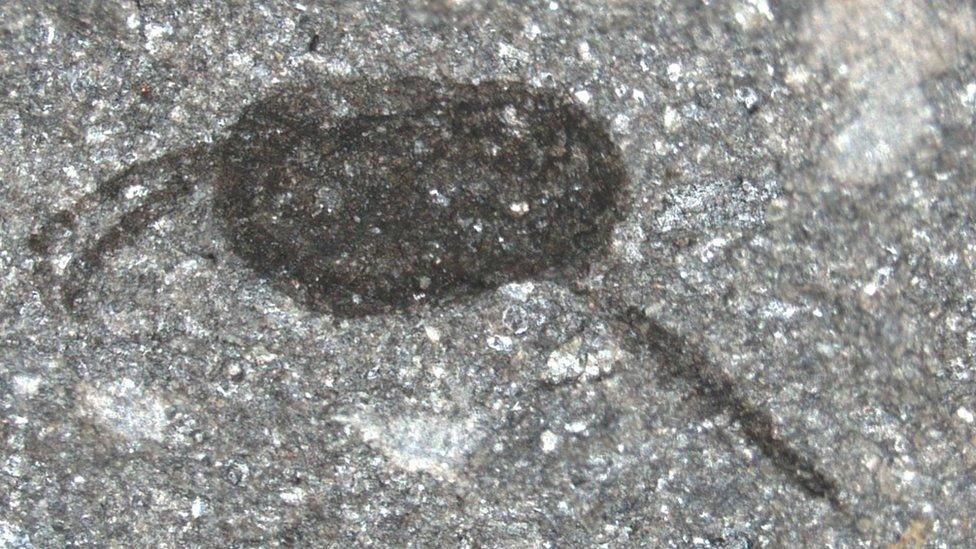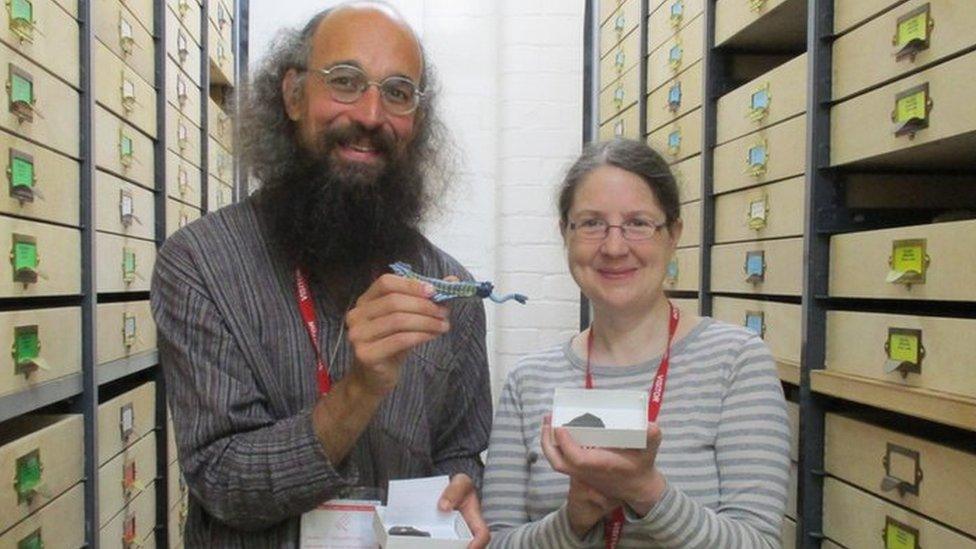'Very rare' fossils found in Wales with crowdfunded help
- Published

Many rare fossils, including soft-bodied creatures, were found at Castle Bank
One of the world's most important fossil deposits has been found in mid Wales, according to experts.
A large number of new fossils have been discovered near Llandrindod Wells, Powys by researchers who had to fundraise to buy equipment.
Museum Wales researchers found the fossils in rocks laid down under the sea more than 460 million years ago.
Over 170 species, including rare soft-bodied animals, were discovered in 2020 on private land known as Castle Bank.
The discovery was made by researchers and Llandrindod residents Dr Joseph Botting and Dr Lucy Muir, who said it was one of the very rare sites where soft tissues and complete organisms are preserved, rather than just hard parts like shells and bones.
Dr Botting and Dr Muir are not employed as academics and had to crowdfund to purchase microscope equipment to aid their work.
Almost all the previous examples are from the Cambrian period, but Castle Bank dates from the middle Ordovician, some 50 million years later.
Dr Muir said the discovery was important because it gave a new insight into how life was evolving at that time.
"It coincides with the 'great Ordovician biodiversification event', when animals with hard skeletons were evolving rapidly," she said.

Lucy Muir and Joe Botting found the fossils at Castle Bank
"For the first time, we will be able to see what the rest of the ecosystem was doing as well."
Fossils of many different kinds of animals were found at Castle Bank and most were small - between approximately 1-5mm (0.04in - 0.2in).
Many were either completely soft-bodied when alive or had a tough skin or exoskeleton.
Places where such soft-bodied fossils are found are extremely rare, and only one other Ordovician site in the world, the Fezouata Biota of Morocco, preserves close to this level of detail.
'Real community effort'
The Castle Bank fossils include the youngest known examples of some unusual groups of animals, including opabiniids - which have vacuum cleaner-like noses - and wiwaxiids, oval-shaped molluscs with a soft underbelly and a back covered with rows of leaf-shaped scales and long spines.
At the same time, the site includes the oldest examples of more modern-looking animals, including a creature that looks almost like an insect and may be distantly related to them.
The new fossils also include many different types of worms, sponges, barnacles, starfish and a primitive horseshoe crab.

The researchers fundraised to buy the necessary equipment to make the discovery
Dr Botting said: "In some ways this is a real community effort to reveal this fauna, because it wouldn't have been possible for us to do it without the support of a large number of people.
"Even most universities do not have the equipment that we were ultimately able to buy."
The pair spent more than 100 days in the field collecting the fossils and are working with colleagues in Cardiff, Cambridge, Sweden and China to examine the finds.
"Despite the extraordinary range of fossils already discovered, work has barely begun," said Dr Botting.
"Every time we go back, we find something new, and sometimes it's something truly extraordinary.
"There are a lot of unanswered questions, and this site is going to keep producing new discoveries for decades."
Related topics
- Published30 March 2023

- Published16 November 2022

- Published21 July 2021
